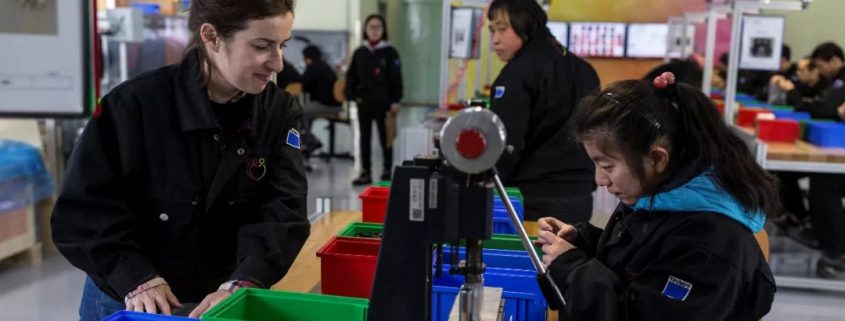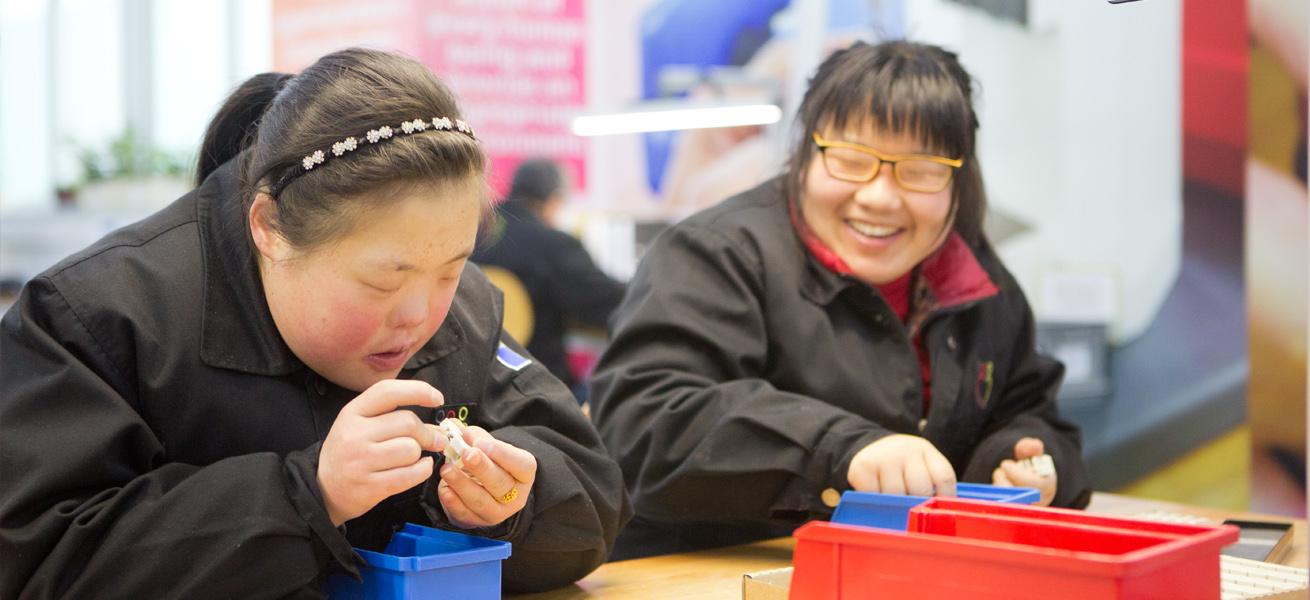Be it a physical or intellectual challenge, China today is home to more than 80 million individuals living with a disability, many of whom do not have the right to work and have a job. The exclusion of such a large number of people from traditional work is a challenge that the government has already taken up through the development of a quota system and tax breaks for employers who hire more inclusively.
However, by far the most exciting changes taking place in this space are coming from entrepreneurs and innovators creating socially minded, profitable businesses to help solve this challenge. We spoke to Nadav, General Manager of the Inclusion Factory, to hear about how he turned his passion into action by empowering individuals living with a disability in China with job opportunities. It is a story of trial and error, long-term commitment, and unwavering belief in yourself that will inspire anyone who is trying to build a socially minded business.
Here are the highlights of our interview with Nadav.
CR: So, Nadav, how did you get involved with the inclusion factory?
Nadav: I moved to China with the idea to do some meaningful socially focused work while my wife was studying at Renmin University in Beijing. I wanted to do something that was related to social work, as this was my passion and background in Israel where I am from. One day I came across a job application saying there was a workshop opening up in Taicang to support people who are intellectually challenged. I couldn’t believe that such a forward-thinking initiative was taking place in China and I wanted to be part of it, so I called them up to find out more. The call went well, and I knew I had to see this workshop for myself. So I decided to fly down to Shanghai to visit in the factory in person and when I was there, I knew immediately that I had to be involved. I called my wife from Taicang to tell her I was taking the job, and after 3 months she joined as well. We’ve been working together on the project with the team for the last three years.
CR: How do you recruit people with disabilities and what challenges are associated with that?
Nadav: We imagined it would be simple! In a country with a population as big as China, and 80 million people with disabilities, we expected to have people queuing at our door interested to join the project and become employed, because there are not many other alternatives. But, that was not the case. What we came to discover was that people with disabilities are not interested in being employed because of fear. We just did a survey with families of people with disabilities and asked if we give you an opportunity for your child to grown and to integrate in a regular workplace, would you like us to do so? Out of our 22 current employees, only 2 parents said yes. And that is because of fear, fear of discrimination. Many have had their children working before in companies and have had negative or frustrating experiences.
So, to recruit people with disabilities, we work with the China Disables Persons’ Federation (CDPF), the bureau responsible for people with disabilities, and they gave us a list of people living with disabilities who were suitable for our project. From there, we went through the interview processes, training and hiring until eventually what we are doing spread by word of mouth around our employees to their wider circle of family and friends. Now we are at the stage where we have people coming and asking us if we are willing to hire them.

Photo Credit: Inclusion Factory
CR: When clients come to you, what is their biggest fear before contracting your services? Is it quality, fear of missed deadlines, costs? How do you overcome it?
Nadav: Without doubt their biggest concerns in the starting phase is quality. But once they have visited the Inclusion Factory, they see we have the top quality machinery and a robust system for running production, as well as rarely missing any deadlines, and being up to industry standards. What is more challenging is the issue of how people with disabilities in China are stigmatized. The general manager or the CEO and others working at the top of companies who come to us tend to have a good understanding of our model the social importance of empowering people with disabilities. But when the partnership gets delegated to other terms where tend to find a strong stigma around the idea of working with people who have disabilities. That is a far greater long-term challenge for us and part of the work we do is raising awareness to overcome this.
CR: Can you tell us a bit about how the Inclusion Factory has transformed itself from production unit to training center, and what are your goals going forward?
Nadav: We started as a production unit, offering assembly services, but since then we’ve developed the model because we saw a demand from our partner companies to hire people with physical disabilities themselves. Actually, there are tax benefits associated with this provided by the government, and there are a lot of people with disabilities looking for employment, so it kind of makes senses from both sides. The companies can save money and have more loyal employees, because people with disabilities tend to be more loyal to companies that hire them as they have less options to find employment elsewhere. So, we found a market. People with disabilities looking to be hired, and employers looking to hire these people. Out of this we developed inclusion advisory which is a service in which we help companies understand where people with disabilities could be integrated into their production line, or in an administration position, and then we help them recruit people with disabilities, train them, and offer on-going support throughout their employment.
So, we don’t see ourselves as a production unit anymore, which is how we started out. We see ourselves as a training center that uses production as a tool, to train people and then integrate them into companies later. If you think about it, what we are doing is not really “inclusion,” because we hire people with disabilities, but they work in a separate company only with people like themselves. We have already fully integrated some individuals with physical disabilities, but the goal is to increase this and to include those with intellectual disabilities. The true definition of inclusion is when a person with a disability is working with regular people in a regular company. So, our vision for the future is to use what we have now as a training center, and then dispatch people to regular companies and support their employer to help them fully integrate into the workforce. Now we are at the stage where companies are approaching us to open a special unit for people with disabilities within their operations, which is amazing, and we really hope we will be able to do this.

Photo Credit: Inclusion Factory
CR: How do you think awareness on people with disabilities in China is changing and do you have a positive outlook on the future of a more inclusive workforce?
Nadav: I tend to be optimistic by choice, and to believe that things are improving. And they are improving worldwide, and in China things are importing very fast. We are light-years away from where we should be in offering inclusive employment for people with disabilities and the way human society accepts others of people who are different. Really, the end goal here is to show that the challenge of employing people with disabilities does not lie with the individuals themselves. It’s the system that is broken. With the right adjustment, support, awareness and mindset, people with intellectual disabilities can be equal members of society and have access to employment opportunities.
The fact that we are even able to do what we are doing in China with the Inclusion Factory, and the fact that it is growing so fast is a step in the right direction. Things in China change fast. It helps that during the last 5 year plan, people with disabilities got a more central place than in previous years, reflecting how important is has become for China to show leadership in social solutions. So going back to our biggest dream, it is to set a standard for how employing people with disabilities should look, and then having the model adopted by the government and duplicated across China. I believe we are not too far away from making this vision a reality.
You can read more about the Inclusion Factory on their website.
